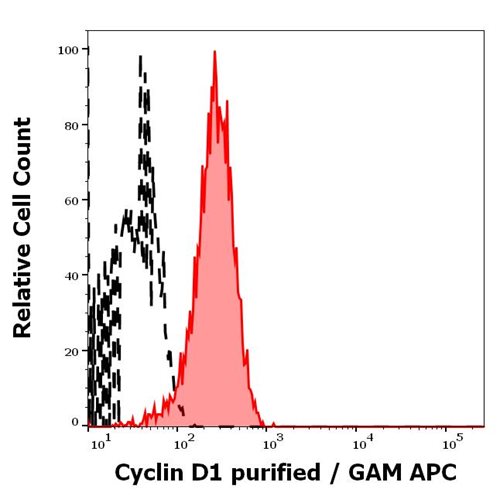Mouse Monoclonal Antibody to RPTOR (Clone: 1411CT316.2.151.34)(Discontinued)

Figure 1: Immunohistochemical analysis of paraffin-embedded h skeletal muscle section using RPTOR Antibody (10-6624). RPTOR Antibody was diluted at 1:25 dilution. A undiluted biotinylated goat polyvalent antibody was used as the secondary, followed by DAB staining.
Roll over image to zoom in
Shipping Info:
For estimated delivery dates, please contact us at [email protected]
| Format : | Purified |
| Amount : | 400 µl |
| Isotype : | Mouse IgG1,Kappa |
| Purification : | Protein G Chromatography |
| Content : | Purified monoclonal antibody supplied in PBS with 0.09% (W/V) sodium azide. |
| Storage condition : | Maintain refrigerated at 2-8°C for up to 2 weeks. For long term store at -20°C in small aliquots to prevent freeze-thaw cycles. |
Involved in the control of the mammalian target of rapamycin complex 1 (mTORC1) activity which regulates cell growth and survival, and autophagy in response to nutrient and hormonal signals; functions as a scaffold for recruiting mTORC1 substrates. mTORC1 is activated in response to growth factors or amino acids. Growth factor-stimulated mTORC1 activation involves a AKT1- mediated phosphorylation of TSC1-TSC2, which leads to the activation of the RHEB GTPase that potently activates the protein kinase activity of mTORC1. Amino acid-signaling to mTORC1 requires its relocalization to the lysosomes mediated by the Ragulator complex and the Rag GTPases. Activated mTORC1 up-regulates protein synthesis by phosphorylating key regulators of mRNA translation and ribosome synthesis. mTORC1 phosphorylates EIF4EBP1 and releases it from inhibiting the elongation initiation factor 4E (eiF4E). mTORC1 phosphorylates and activates S6K1 at 'Thr-389', which then promotes protein synthesis by phosphorylating PDCD4 and targeting it for degradation. Involved in ciliogenesis.
IHC-P~1:25|| WB~1:500-1:1000
For Research Use Only. Not for use in diagnostic/therapeutics procedures.
| Subcellular location: | Cytoplasm, Lysosome, Cytoplasmic granule |
| Post transnational modification: | Insulin-stimulated phosphorylation at Ser-863 by MTOR and MAPK8 up-regulates mTORC1 activity. Osmotic stress also induces phosphorylation at Ser-696, Thr-706 and Ser-863 by MAPK8. Ser-863 phosphorylation is required for phosphorylation at Ser-855 and Ser-859. In response to nutrient limitation, phosphorylated by AMPK; phosphorylation promotes interaction with 14-3-3 proteins, leading to negative regulation of the mTORC1 complex. In response to growth factors, phosphorylated at Ser-719, Ser-721 and Ser-722 by RPS6KA1, which stimulates mTORC1 activity. |
| Tissue Specificity: | Highly expressed in skeletal muscle, and in a lesser extent in brain, lung, small intestine, kidney and placenta. Isoform 3 is widely expressed, with highest levels in nasal mucosa and pituitary and lowest in spleen. |
| BioGrid: | 121582. 132 interactions. |
|
There are currently no product reviews
|














.png)













